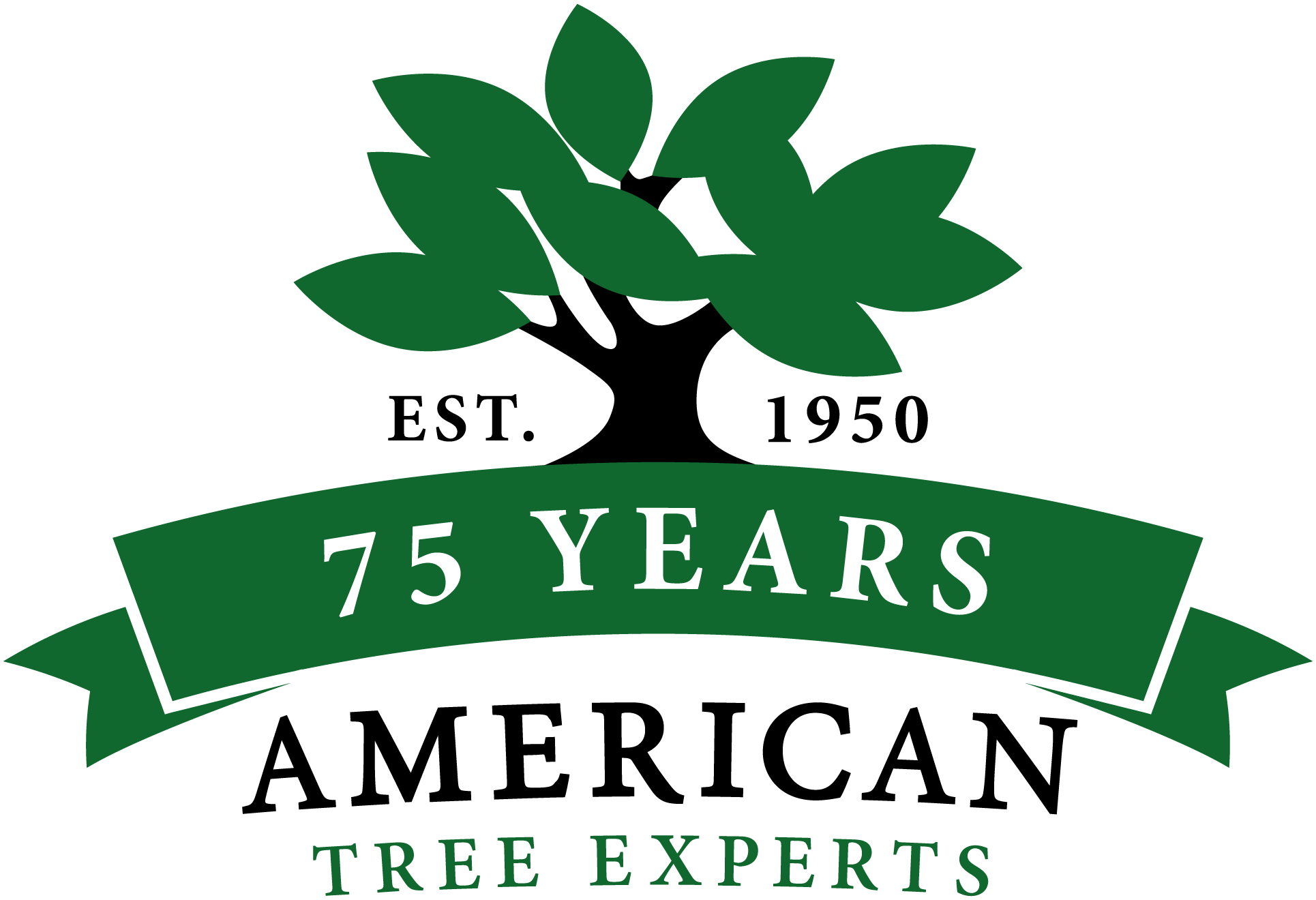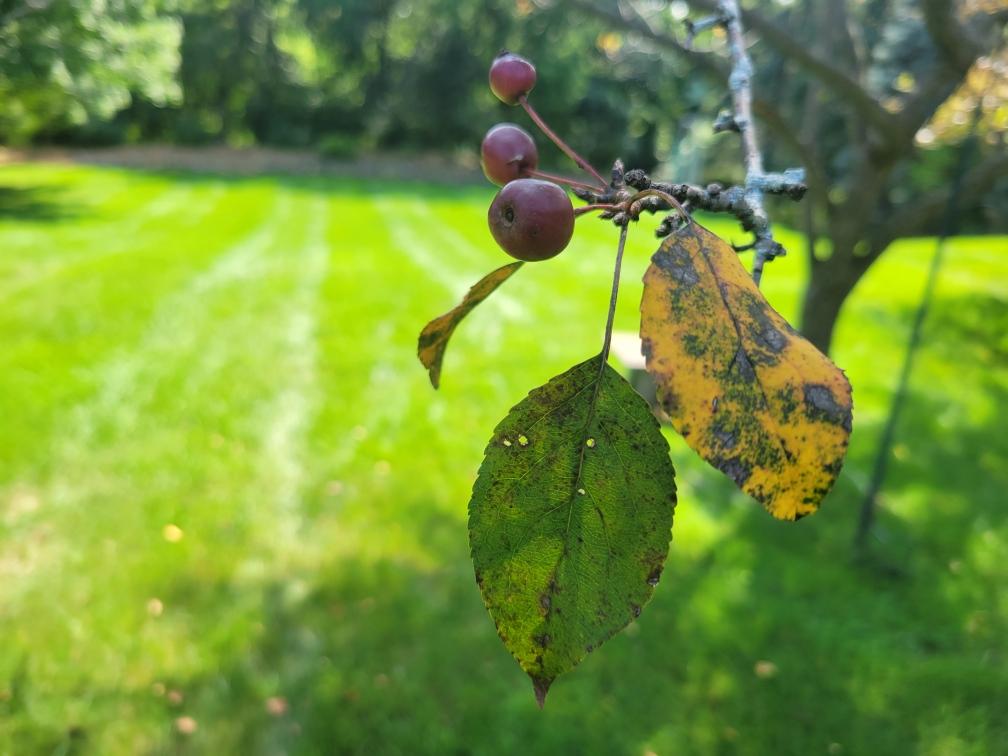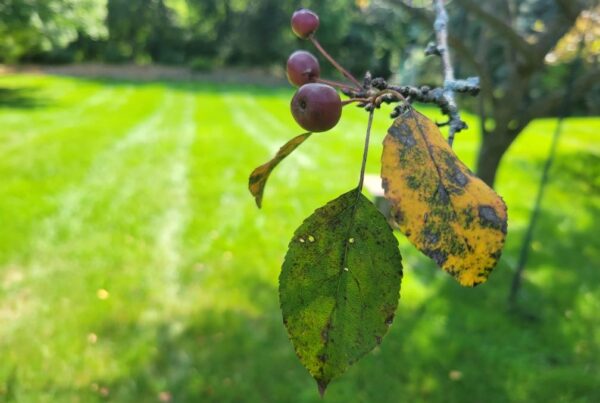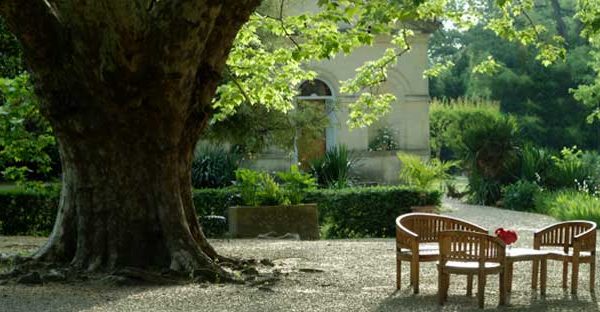It’s been almost a year since record-breaking rainfall swept through southeast Wisconsin, and the wet conditions that fueled the spread of foliar diseases still pose a serious challenge to tree health.
It’s why our certified arborists at American Tree Experts continue to prioritize protection against numerous tree infections. Right now, apple scab continues to be one of the most persistent and damaging diseases affecting trees.
“Apple scab remains in the foliage,” says Dean Ziemienski, Vice President of American Tree Experts. “So once the leaves drop off, it will no longer affect the tree, however, apple or crabapple trees are more susceptible to the foliage becoming reinfected every year, and the cumulative impact of that is harmful.” Raking up and removing or destroying infected leaves helps to reduce disease in the following year.
Ziemienski says ornamental and fruit trees in the rose family are often affected by apple scab. Small, circular brown lesions first appear on the upper side of the leaves. Defoliation occurs when the lesions expand and blend together. If these conditions worsen year after year, fungicide applications are recommended, especially in the spring when the spores are most prevalent.
“The best time for application is after initial leaf out, with additional treatments one to two weeks apart,” he says.
Additional fungal diseases to watch for:
- Rust – Impacts junipers and hardwood trees, like hawthorn and crabapples. This disease involves a complex life cycle where two different host species are needed to cause infection. The effect is mostly cosmetic, but rust will diminish a tree’s appearance.
- Leaf Spot – Exhibits distinctive brown spots or lesions in various dark colors (brown, black, tan, or red) and possibly red or purple borders on leaves. Ash, maple, white oak, sycamore, and walnut are most susceptible, causing partial to complete defoliation.
- Anthracnose – Commonly seen on hardwoods like oak and maple. Displays patches of brown, dead leaf tissue on the tree. As the damage advances, the leaves will curl, shrivel up, and fall.
It takes proper care to maintain the overall health and well-being of your trees, such as watering, fertilization, pruning, and mulching to make them less susceptible to diseases. ATE’s Plant Health Care (PHC) Program involves a routine maintenance check to curb fungal issues on your property and more.
Reach out to us for a consultation. Our certified arborists are equipped to accurately diagnose and treat your trees.




